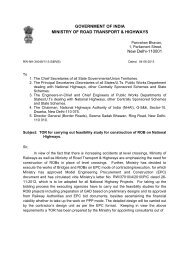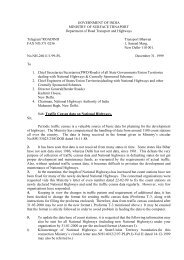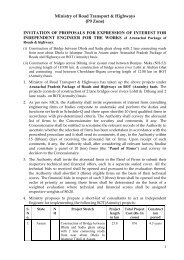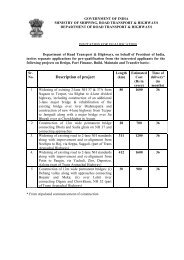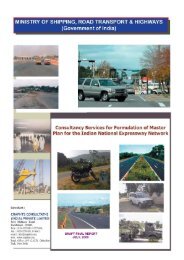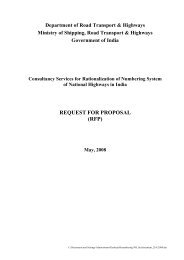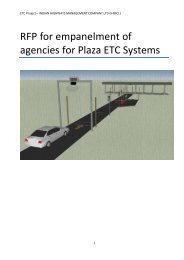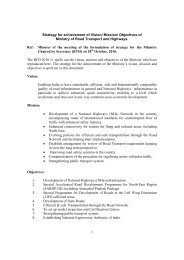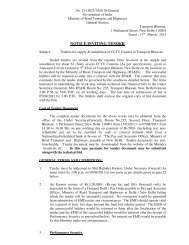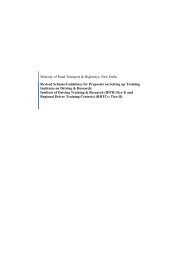Indian Raod cngress
Indian Raod cngress
Indian Raod cngress
You also want an ePaper? Increase the reach of your titles
YUMPU automatically turns print PDFs into web optimized ePapers that Google loves.
Section 1900<br />
Structural Steel<br />
When countersunk heads are required, the heads shall fill the countersunk. The included<br />
angle of the head shall be as follows :<br />
a) For plates over 14 mm thickness 90°<br />
b) For plates upto and including 14 mm thickness 120°<br />
The tolerance on the diameter of rivets shall be in accordance with IS:1148 and IS:1149<br />
for mild steel rivets and high tensile steel rivets respectively and unless otherwise specified,<br />
the tolerance shall be minus tolerance.<br />
Rivets shall be driven when hot so as to fill the hole as completely as possible and shall be<br />
of sufficient length to form a head of standard dimension. When counter-sunk head is<br />
required, the head shall fill the counter-sunk hole. Projection after counter-sinking shall be<br />
ground off wherever necessary.<br />
Rivets shall be heated uniformly to a “light cherry red” colour between 650°C to 700°C for<br />
hydraulic riveting and “orange colour” for pneumatic riveting of mild steel rivets and shall<br />
be red hot from head to the point when inserted and shall be upset in its entire length so as<br />
to fill the hole as completely as possible when hot. Rivets, after being heated and before<br />
being inserted in the hole shall be made free from scale by striking the hot rivet on a hard<br />
surface.<br />
Wherever possible, the rivets shall be machine driven, preferably by direct acting riveters.<br />
The driving pressure shall be maintained on the rivets for a short time after the upsetting is<br />
completed. High tensile steel rivets shall be heated upto 1100°C. Any rivet whose point is<br />
heated more than prescribed, shall not be driven.<br />
Where flush surface is required, any projecting metal shall be chipped or ground off.<br />
Before riveting is commenced, all work shall be properly bolted up so that the various<br />
sections and plates are in close contact throughout. Drifts shall only be used for drawing<br />
the work into position and shall not be used to such an extent as to distort the holes. Drifts<br />
of a larger size than the nominal diameter of the hole shall not be used. The riveting shall<br />
be done by hydraulic or pneumatic machine unless otherwise specified by the Engineer.<br />
Driven rivets, when struck sharply on the head by a quarter pound rivet testing hammer,<br />
shall be free from movement and vibrations. Assembled riveted joint surfaces, including<br />
those adjacent to the rivet heads, shall be free from scale, dirt, loose scale, burrs, other<br />
foreign materials and defects that would prevent solid seating of parts.<br />
All loose or burnt rivets and rivets with cracked or badly formed defective heads or heads<br />
which are unduly eccentric with the shanks, shall be removed and replaced. In removing<br />
rivets, the head shall be sheared off and the rivet punched out so as not to injure the adjacent<br />
10



